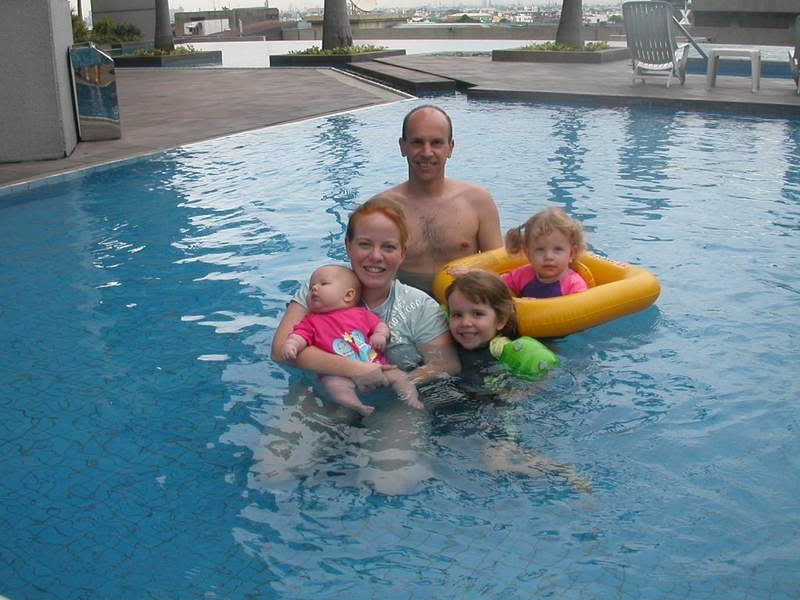Emergent reading
Emily has started reading. It’s hard to say exactly when one can ‘read’, as there are many different levels of reading. It’s kind of like saying that one can speak another language. This ability is sometimes claimed on the basis of one phrase, sometimes only when one is native-speaker-like, let alone all the different shades in between!
Emily’s reading ability has been growing over the last 2 years, ever since ‘Grandma’ made sure she knew all the letters of the alphabet. The first signs of word recognition came over a year ago, when she read “emergency” as her own name – it had the correct letters on the edges! Then, she gradually learned her name, and other familiar words. All the while, she was learning what sounds the letters make, and spelling things out in signs that she saw, and asking what things meant. Some of the first words she recognized included ‘toyota’ and ‘honda’– from trips in the car! (Like father, like daughter…)
At nursery school, they are not teaching ‘reading’ in the narrow, traditional interpretation of the word. One of the nursery teachers is the school’s literacy specialist, and she informed us parents of the ideas behind the “whole language approach” that the school uses. At this stage, they are emphasizing verbal literacy (including pronunciation) and vocabulary development, and this includes lots of singing and chanting. She stressed that rhyming is an important concept for literacy, as it encourages children to recognize familiar ‘parts’ of words, both aurally and eventually in writing. (Yay! – and a little “no kidding” - for us Dr. Seuss lovers!). The idea behind the “whole language approach” is that with a little bit of input on lots of levels (vocabulary, pronunciation, being read to, singing, chanting, rhyming, as well as (eventually) the traditional phonics and alphabet work), children will eventually actually teach themselves to read.
And in Emily’s case, this is true! It’s happening right before our eyes. She has really cottoned on to rhyming, and enjoys playing ‘make up rhymes’ on our trips in the car. She’ll say something she sees out the window, and then see how many other words she knows that rhyme with it. She knows that the rhymes come from the spelling being the same. So on our calendar, she knows that the “ember” part of the month is the same in September, November and December. She recognizes all of the children’s names in her class (from artwork posted randomly around her classroom) and she can read instructions in a little exercise book that she got for Christmas. (I had to do a double-take the day I caught myself saying to her “Now you can do the next page – just make sure you read the instructions first.” I realized she had been reading the instructions for a while!) Her memory assists her in knowing what the words are in her favourite books, and this helps her associate the sounds of the words she knows with their writing on the page.
So, Emily can now read some simple baby books to her sister. Is she reading, or reciting from memory? A bit of both, I’m sure. Sometimes she stops and asks me what a word is. And, in the last couple months, she’s started sight reading. Funny thing is, she’s probably been doing it a while, but we have only noticed it when she gets things wrong! She said to me the other day “Mum, where’s your other croak?” I didn’t know what she was talking about, till she lifted up my shoe – the one with the brand name “Croc” written on the front. To her, it was such a natural thing to have read the word, that she didn’t even understand my funny expression.


0 Comments:
Post a Comment
<< Home